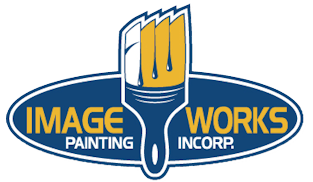Professional Tips To Prepare Your Walls For Interior Painting
Jeremy Holderness No matter how good your brush and roller skills are, if you don't first take the time to properly prepare your walls they're probably going to come out looking bad.
No matter how good your brush and roller skills are, if you don't first take the time to properly prepare your walls they're probably going to come out looking bad.
Last week's blog was dedicated to helping you pick out the best tools to tackle your interior painting project. In keeping with the interior painting tips theme, this week we will focus on showing you how to get your walls ready so they turn out beautifully.
Making Drywall Repairs
Assuming your walls are drywall and not plaster, here are a few tips that only require some very basic repair skills that will allow you to take care of wall repairs without having to hire a professional.
1) Fixing Holes - If you have holes in your drywall that are smaller than the size of a baseball (curiously enough it's not uncommon to find baseball-sized holes in kids' rooms) try applying a self-adhesive drywall patch to fix them. It's a sheet of thin aluminum covered by self-adhesive mesh drywall tape that will stick directly to the wall to cover up the hole.
Once you've applied the patch, mix up a small amount of fast drying joint compound in your mud pan to a thin peanut butter consistency.
Using a broad drywall knife, apply the first coat of joint compound heavy enough to cover the patch and feather it out about 8" - 12" beyond each side to reduce the appearance of the patch. Avoid applying the joint compound any heavier than is necessary to cover the patch, as you will have to sand off the excess.
After the joint compound has completely dried use a fine grit sanding sponge to sand the first coat smooth. To keep dust to a minimum during sanding, have a bucket of water handy to dip your sponge into before sanding the surface. Be sure to wring all excess water out as the sponge should be damp and not wet. Rinse the sponge as it gets caked with joint compound and continue sanding until the surface is smooth.
Apply a second coat - and a third if necessary - slightly thinner than the first; sanding between each coat until the patched area blends in with the surrounding wall.
*Tip* Always clean up your mud pan and tools with water and a rag immediately after applying each batch of joint compound. This will keep your tools from building a crust of drywall on them and keep the small chunks of dried compound out of your next finish coat.
2) Fixing Cracked Drywall Tape - If the drywall joint tape on your walls has cracked and is protruding or separating from the wall, then you need to remove the damaged area and repair it prior to painting.
Start by using a sharp razor knife to cut out the damaged section of the tape strip. Use a putty knife to clear out any dried, loose joint compound and debris from the area.
Mix up some fast drying joint compound in your mud pan and apply a small amount to the exposed drywall seam with a 4" - 6" wide drywall knife. This will act like a glue to stick your drywall tape to the wall. Cut a piece of drywall paper tape long enough to cover the exposed seam and press it into the wet joint compound with your drywall knife.
Immediately apply a thin coat of joint compound with your drywall knife over top of the paper tape you applied; just heavy enough to cover the tape.
Follow the steps above that you used to repair your drywall holes to finish your subsequent coats of compound using your broad drywall knife to feather your edges out wide.
3) Fixing Dents & Dings - For smaller dents, dings, and nail holes in your walls try using a lightweight, shrink-free spackling instead of joint compound. It dries faster with no mixing needed.
Using a small putty knife, apply enough spackling to the affected areas to slightly over fill the dent or ding. You can easily sand the areas down smooth after they've dried.
Scraping & Sanding
After you've taken care of your drywall repairs, your final act of TLC for your walls is to scrape and sand them smooth.
It's common to find imperfections and debris in the finish of your previously painted walls. From small chunks of dried drywall mud, to dirt, and runs in the paint finish.
You can easily take care of these by taking your broad drywall knife and making a quick pass over the walls using it like a wide scraper. This will remove some of the junk that is lightly stuck to the surface.
Follow up your quick scrape with a light sanding, using a pole sander with some drywall sanding screen attached. Pay special attention to any areas that look less-than-pleasing. This is the time to address theses areas because they will not go away by painting over them. They may even become more obvious when you apply your new coating.
When you've finished with the scraping and sanding, take a clean damp cloth and wipe down the walls to remove any dirt and dust.
Priming & Caulking
Spot prime any patches or bare drywall areas with the appropriate primer. If you are painting over a glossy finish it may also require a special primer for the new coating to adhere. For a full guide to priming, check out our blog - "Primer Before Paint: When Is It Necessary & When Is It A Waste?"
The best way to get a seamless and professional look is to caulk all of your cracks. For any cracks where the walls meet the ceiling, or between dissimilar materials that are being painting (i.e. where walls and painted wood trim meet) use a high quality, paintable acrylic-latex caulking to fill the gaps.
The secret to getting a smooth finish on your caulking job is to cut the spout on the tube at an angle, close to the tip so the hole is small. This will allow you more control over the amount of caulking that you apply with your caulk gun.
Keep a small cup of water and some rags handy as you're smoothing out your freshly applied bead of caulk. Keep your fingertip moist as you're smoothing out the bead so the caulking doesn't stick to you, and use the rag to wipe the excess from your finger as it starts to build up.
Allow the caulking to dry per the manufacturer's recommendations before painting.
*Tip* You'll find that there's a large price difference in caulking. It can range from $1 per tube up to $5 or more per tube. Spend the extra money on the higher quality caulking as it will allow for more expansion and contraction; keeping it from eventually cracking and pulling away from the surface.
That covers some of the basics of interior painting wall prep. We'll go into more detail in our upcoming eBook series on interior painting.
If you're in the Greater Pittsburgh Area and you have an interior wall prep or painting project that you need assistance with please click below to schedule a free consultation and quote.
Photo by: dunham_1 / CC BY 4.0








